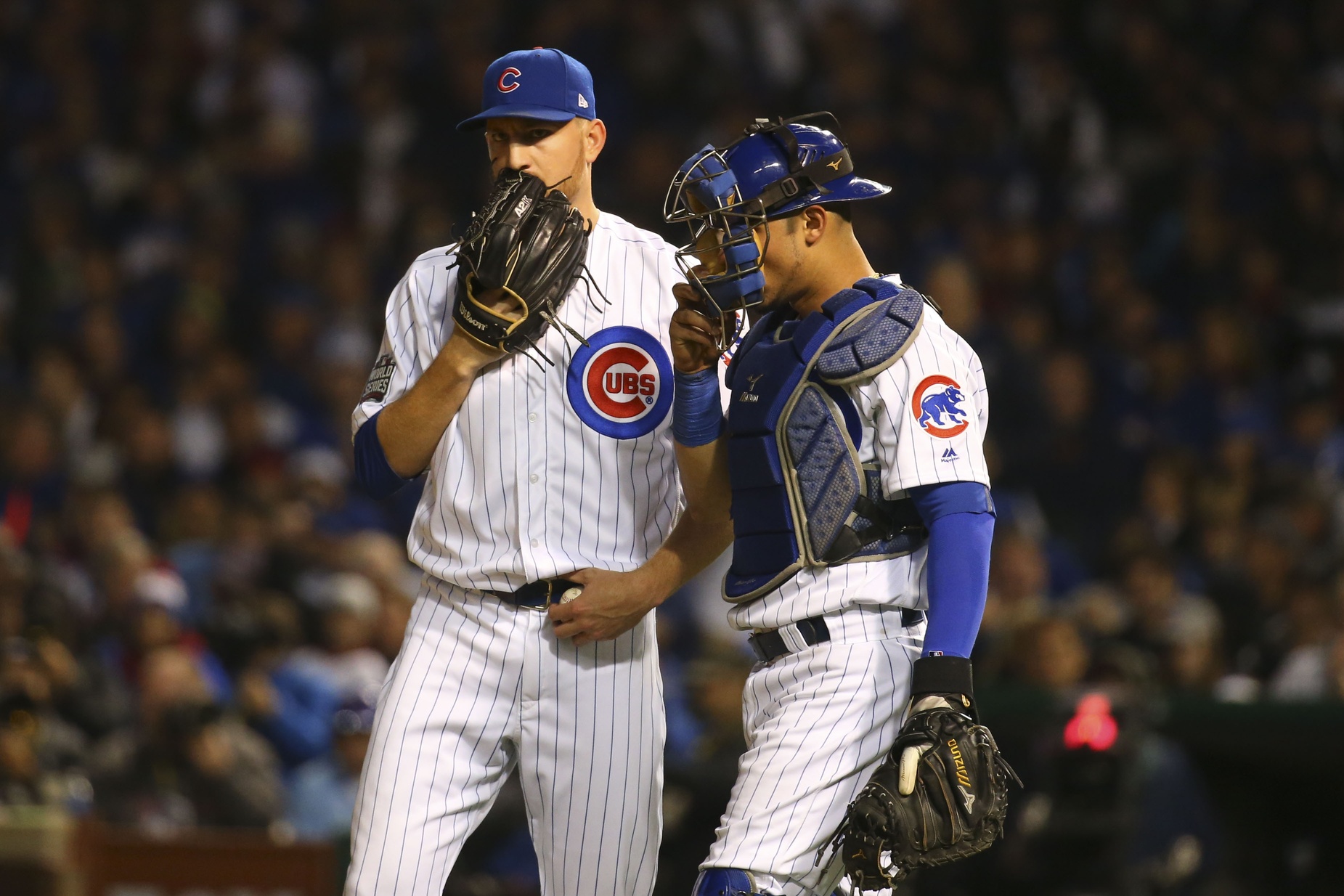Position: Relief pitcher, likely starter in 2017
2016 Stats: 100 IP, 2.52 ERA, 3.89 DRA, 90 cFIP, .262 oppTAv
Year in Review:
Every successful team needs a few of the players who are willing to shoulder the unglamorous grunt work in order to make a run at a championship. The task of turning an unparalleled regular season into a title requires these kinds of guys, and for the Cubs, Mike Montgomery was one of them.
Even if the peak of Montgomery’s career arc turns out to be that final out in Game Seven, he will have been more than worth the cost of sending away a potential impact bat in Dan Vogelbach. It’s telling that, with a one-run lead and one out left to be recorded, Joe Maddon chose Montgomery to supplant Carl Edwards, Jr. on the mound when Hector Rondon and Pedro Strop were both available. He had thus far pitched to little fanfare, but he handled the biggest moment possible that night.
And while he might be most remembered for his work in getting that last out in the tenth inning on November 2, Montgomery was, by some measure, even more valuable in the postseason than Aroldis Chapman.
Montgomery’s season started rather unceremoniously, however. So much so that predicting how it would end would not have led any reasonable person close to what ended up happening. In his 17 appearances in the regular season after joining the Cubs in late July, Montgomery served both as a spot starter and out of the bullpen. While still with the Mariners in 2016, Montgomery was used almost exclusively out of the bullpen, making starts only in his final two appearances with Seattle. This was the opposite of their approach in 2015, when he made 16 starts and never pitched in relief.
Maybe this is the blessing and the curse of left-handedness in baseball. The temptation to siphon these arms to the bullpen, where quality lefty relievers can sometimes be hard to come by, means that guys like Montgomery can be asked to live in an ill-defined state of limbo before they find their niche. Montgomery was called upon to start for the Cubs in late August and early September, with the selfless purpose of extending the life on the regular five starters in anticipation of a deep postseason run. He covered a couple of starts when John Lackey went down with injury at the end of August, but stretched the rotation to six starters even after Lackey returned.
The first three starts he made in that role were sturdy enough, but the last two were downright impressive. On September 7 and 15, he pitched 11 innings collectively—in which he gave up just six hits and two earned runs to go with a K/9 rate near 11. That these were both starts against the Brewers might dampen the excitement some, but he also pitched a very solid game against the future NLCS opponent Dodgers on August 26.
And while Jeff Sullivan (linked above) might argue that he did more than Chapman in the postseason, his work in that span was not eye-popping on the whole. The NLCS was particularly forgettable (6.23 ERA), but that might be why it’s best that our memories zero in on just one out at the very end of it all.
All taken together, Montgomery had a season that, without the save in Game Seven, would hardly inspire a desire for deep analysis. In fact, if Edwards doesn’t allow another run in the bottom of the tenth, Montgomery probably doesn’t pitch in that spot at all. But maybe that’s a sample of the kind of pitcher he is. Like the string of spot starts in the latter third of the regular season, this was a time when Montgomery was needed, so he quietly and unassumingly shouldered the load and got the job done.
Looking ahead:
At this point, Montgomery’s role with the Cubs in 2017 has more clarity than it did a few months ago. Just as the debris of the World Series parade had been cleaned up, Montgomery was expressing his intention to go into Spring Training as a starter in the fifth spot evacuated by Hammel. Montgomery projects well to succeed as an end-of-the-rotation starter with the stuff to pitch at an above-average level in that position on the starting staff.
That stuff involves an effective mix of pitches, especially a changeup highlighted here just over a month ago. To reiterate, his changeup is especially challenging to hit for right-handed batters, and it gets a nearly 30 percent whiff rate no matter which side of the plate the hitter is on. He’ll generally rely on his fastball and curveball otherwise, but this changeup makes for a useful out pitch against hitters who might otherwise have an easier time against a left-hander.
But the Cubs aren’t quite done adding to their pitching staff, and this could mean that Montgomery will have to face some competition for the last spot in the rotation, especially if the rumors about Tyson Ross are true. The rotation is deep even after the departure of Jason Hammel, but it fills with question marks after the 2017 season, so the upcoming season is Montgomery’s best opportunity to cement himself in the Cubs’ future plans.
Lead photo courtesy of Jerry Lai—USA Today Sports
